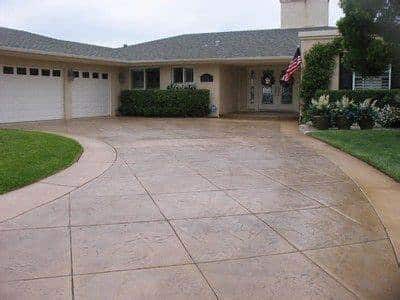Ways To Cast Concrete In Any Shape In Lemon Grove

- One of the simplest and most common methods to cast concrete in any shape is by using molds. Molds can be made from a variety of materials, including plastic, wood, or rubber. The process involves pouring the concrete mixture into the mold and allowing it to set. Once the concrete has cured, you can remove the mold to reveal your desired shape. This technique is perfect for creating decorative concrete items like garden stepping stones, countertops, or even intricate sculptures.
- Fabric formwork is an innovative method that allows you to create complex and organic shapes using concrete. It involves draping a flexible fabric, typically made of nylon or polyester, over a frame and then pouring concrete into the fabric. As the concrete cures, it takes the shape of the fabric, resulting in unique, flowing forms. This technique is often used in architectural and artistic projects, producing stunning curved walls and structures.
- Advancements in technology have brought about the use of 3D printing in the construction industry, including concrete casting. 3D printing allows for intricate and precise shapes to be created with ease. Specialized concrete 3D printers deposit layers of concrete material according to a digital design, enabling the construction of complex structures, even those with overhangs and intricate details. While 3D printing is still relatively new in the field of concrete casting, it holds immense potential for the future of construction.
- Slipforming is a technique often used in large-scale construction projects, such as building towers and bridges. It involves continuously pouring concrete into a formwork that is slowly moving upward or laterally. As the concrete sets, the formwork moves, allowing for a seamless and uniform shape to be achieved. Slipforming is highly efficient and ensures consistent quality in large-scale concrete structures.
- For artists and sculptors, working with concrete offers endless possibilities. Freeform concrete sculpting is a hands-on technique where the artist manually shapes and molds the concrete while it is still in a malleable state. Tools like trowels, chisels, and brushes are used to create intricate textures and details. This method allows for the ultimate creative freedom and has been employed in creating stunning outdoor sculptures and public art installations.
FAQs
How Long Does It Take For Concrete To Cure In A Mold?
The time it takes for concrete to cure in a mold depends on several factors, including the type of concrete mix used and environmental conditions. In general, it can take anywhere from 24 to 72 hours for concrete to set in a mold. However, for full strength and durability, concrete may continue to cure and harden for up to 28 days.
What Precautions Should I Take When Working With Concrete Molds?
When working with concrete molds, it’s important to wear appropriate protective gear, including gloves and safety glasses, to avoid skin and eye contact with wet concrete. Adequate ventilation is also essential when working indoors with concrete to minimize exposure to dust and fumes. Follow the manufacturer’s instructions for mold release agents and curing times for best results.
Can I Reuse Fabric Formwork For Multiple Projects?
Fabric formwork can be reused for multiple projects, but its lifespan depends on the material’s durability and how well it is maintained. Proper cleaning and storage can prolong the life of fabric formwork. However, over time, the fabric may degrade or lose its shape-holding ability, necessitating replacement for precise projects.
Conclusion
Concrete’s ability to take on virtually any shape makes it an incredibly versatile material in construction and art. Whether you’re using molds, fabric formwork, 3D printing, slipforming, or freeform sculpting, there are numerous ways to harness the adaptability of concrete to bring your creative visions to life or construct functional structures with unique designs. Just remember to follow safety precautions and choose the method that best suits your project’s size, scope, and purpose. With these techniques in your toolbox, you’ll be well-equipped to cast concrete in any shape you desire. For more information, contact Concrete Contractor Lemon Grove at (619) 648-5335.

